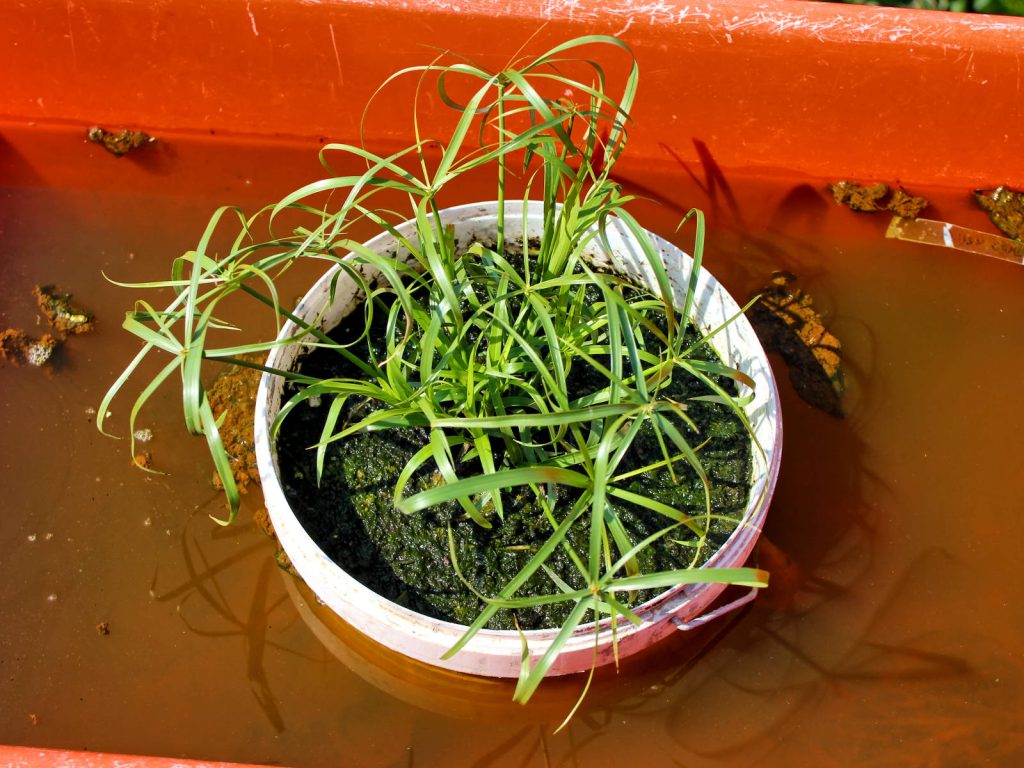Cyperus alternifolius

Cyperus alternifolius seeds sown in the middle of March 2013 started sprouting after a couple of weeks and new plants continued to emerge for at least a month. Germination rate seemed to be terrible at first, but later it turned out, that most of 2 years old tiny seeds remained viable and sprouted. First week or two, seedlings remained extremely small and fragile, but with time, leaves grew larger and multiplied. Because I used old seeds and expected bad germination rate, all the seedlings ended up in one small plastic cup. With overcrowding that started to occur with time, I had to transplant seedlings soon after they got three or four leaves. I managed to keep their small roots by soaking the soil completely and pushing individual seedlings out using a toothpick. That way each seedling got a bit of soil with it around the roots which gave great results – none of them died off during transplant.



Small seedlings were growing fast for their size and in only a couple of days, they were strong enough to go into individual pots. Placed under cheap Chinese cool white LED light, it was able to get at least some light. Rainy weather didn’t allow sunbathing behind the window.
Seedlings that got replanted, started to take off much faster than those that remained in original pot. Warmer weather finally allowed that they were placed outside. Soon, roots became apparent on transparent plastic cup again and I had to start preparing to move them into larger pots again. Plants started to grow shoots from gaps between lower leaves and original stem. Soon they became quite bushy and for their second time, ready to be transplanted. Cold rainy weather slowed down their growth considerably.
By the second half of May, it started elongating stems. Even with roots that started to get a bit overcrowded, strongest seedling continued to grow vigorously. I took this one inside during cold nights that drop well below 10°C.



‘Dusters’ started to grow scale like formations. With each additional day, plants are growing stronger. They are growing more and more stems that are getting taller and taller. I have a feeling, that every emerging shoot starts doing the duster thingie in short time. Sadly there’s still not enough warmth and sun exposure for the seedlings to really take off. We’ll get there sooner or later. 😉

With warmer weather Cyperus alternifolius started to grow faster and needed to be transplanted from little plastic cup. I found small 5l bucket with a small hole on the bottom. I placed it inside another container filled with rain water and rusty nails. Water inside the plastic tub is keeping soil temperature more stable and prevent it to dry out. Nails made the water look orange with Iron oxide that will also help Cyperus alternifolius to remain healthy green.

Soon after transplant, new shoots started to appear. When plant received even more heat, growth further accelerated and it didn’t take long until first flowers started to emerge. At that point it was certain, it was not Cyperus Papyrus seeds I received at all! Seeds were supposed to be from larger sibling Cyperus Papyrus, but I ended up with Cyperus alternifolius instead. Flowers appeared on plant that was merely 20 cm tall, which came as a surprise, because Papyrus usually doesn’t flower in it’s first year.
I started researching a bit to find out what version of Cyperus I actually received. Flowers and overall plant shape was screaming Cyperus alternifolius (also known as: Cyperus involucratus, Umbrella Plant, Umbrella Papyrus or Umbrella Palm). It looks like I’ll have to go shopping again to get real giant Cyperus Papyrus seeds.


Some flower buds didn’t turn into flowers, but instead, started forming small plants. Usually that happens if it gets sunk under water, but this one decided to multiply above water level. If I ever decide to divide it, there should be no problems.



In only a couple of months seedlings became large and well established. Most of them started to flower and some of them managed to grow small plants on top of their “heads”. Some of these small plants also started to flower, while still attached to the mother plant.
This plant is quite rewarding. It’s easy and fast to grow, looks great when it starts to flower and it’s really easy to divide it. Sadly it can’t handle Zone 7 winters, which means I’ll have to make sure it survives the winter inside.



One thought on “Cyperus alternifolius”
Thank you for share your experiences…